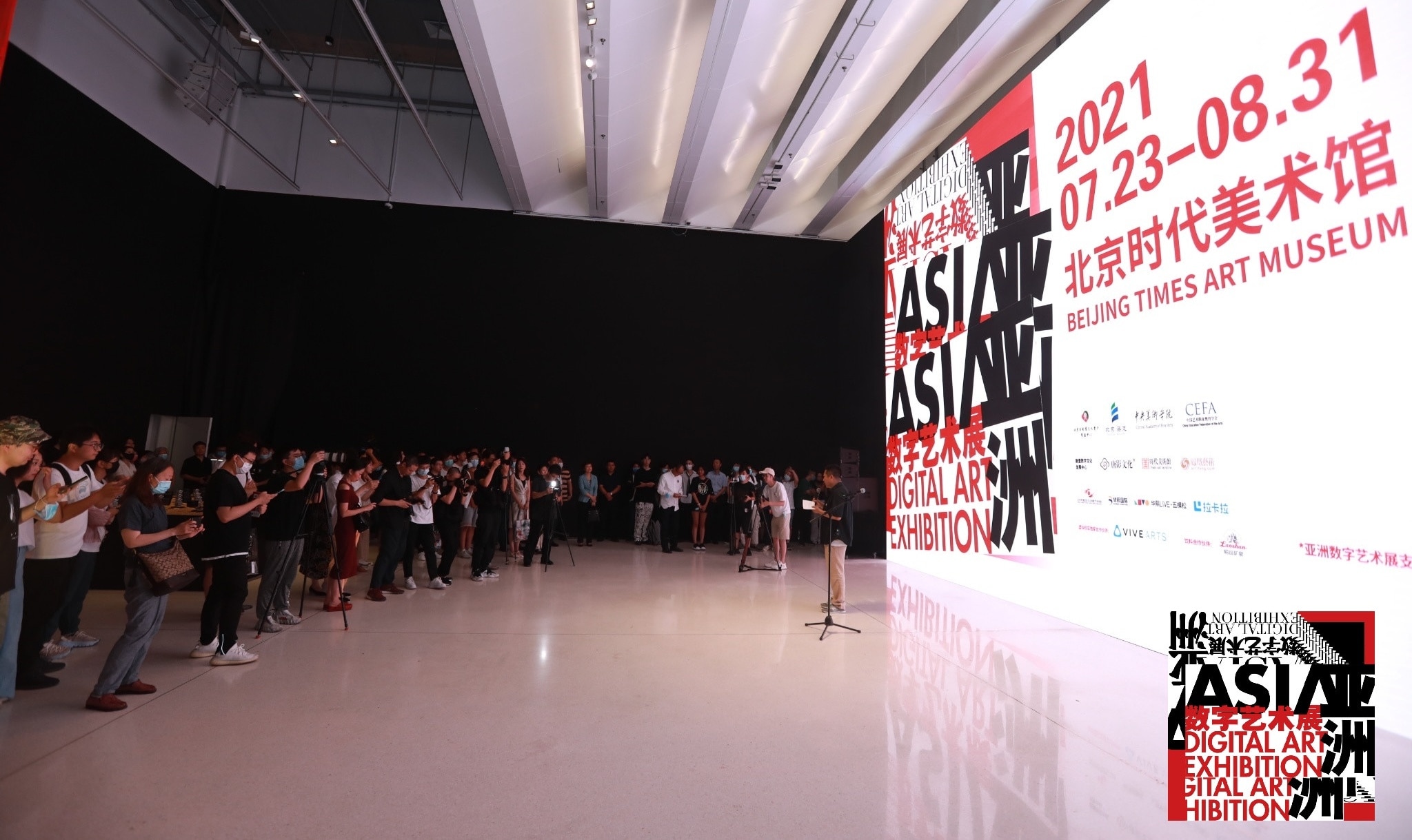Asian Digital Art Exhibition: A Virtual Journey on the Edge of Culture and Technology
Asian Digital Art Exhibition opens on July 23, 2021 at Times Art Museum in Beijing. Ms. Florie Zheng, VIVE Arts Head of Partnerships in China, took the opportunity to talk with curator Mr. Chen Baoyang about the exhibition and the future of digital art. Asian Digital Art Exhibition is held from July 23 to August 21, 2021 in exhibition halls 1-4 at the Times Art Museum in Beijing and will showcase artworks on topics ranging from artificial intelligence, robots, crypto art and more from international artists.
Chen Baoyang, curator of ‘Asian Digital Art Exhibition”
Can you please tell us about the background and mission of the Asian Digital Art Exhibition?
This exhibition’s mission is to show the results when technology and the arts combine. We can now observe that artists employ many kinds of technologies with ease. Meanwhile, technology finds increasingly broader uses in our society, artificial intelligence for instance. General usage would engender social phenomena, which could be a point of departure for artists’ creations. When using these innovative technologies, we can also see how they developed and the relationship between the advancement of human technology and the environment. The mission of the exhibition is to provide a platform for artists where they can discuss the relations between technology and society, or themselves.
When selecting works as a curator for a colossal topic such as the dialogue between culture and technology, how do you expand your thoughts and make the cut?
A leading concept would be that I hope the artwork innovates on the technical front while being able to hold the fort from the perspective of art history or traditional art, and I hope to see it combine these two, or trying to find a combination and collaboration in the process. It is easy for an artist and a technology industry professional to communicate, perhaps because both eventually try to employ creative thinking to solve a problem. Another inspiration would be to focus on very young creators. If full modernity is to be achieved in 2035, then children of now will be the mainstream force in society then. I want to give them an opportunity to express their thoughts. Another way of thinking is what I call algorithm. Artists use algorithms to try to present something vivid with a form that we could call algorithmic creatures.
Can you tell us about Liam Young’s work Planet City?
Liam is thinking about the dynamic relationship between technology and society. The city is besieged. In the last 20 to 30 years, China urbanized very quickly, the changes in population and economical structures are connected to the process of urbanization. During this process, all kinds of urban problems will emerge. I think there is the concept of reverence in Liam Young’s work. When cities develop, technology and life also influence each other. At the same time, his narration for the viewer stands on a middle ground, neither pessimistic nor too positive.
You are a digital artist yourself. Can you talk about what are your feelings using different technologies to create artworks?
There’s a certain technical aspect required in the process of creation. I have to be very knowledgeable about the technology to be able to sense it as a medium. The collaboration between an artist and a tech company or team is often a two-way innovation model. I have another takeaway - artists are often very strict about technology because it influences us greatly. There are drawbacks to technology, but all in all I’m rather an optimist.
Can you please share with us the creation process of your 2017 VR artwork Do Androids Dream of Electric Cows?
When I got to know VIVE technology, my personal understanding is that the essence of VR is about how space is experienced - it evokes bodily senses. There is a tempered glass worker in this artwork, and the user walks about in a maze. During the process, if the user follows my hints entirely, they will hit a glass wall, and that’s when they experience a fissure between the real and the virtual. VR is an experience to wake up the body. Using transparent tempered glass as a guide is a philosophical expression of the relationship between seeing and being seen and who is dominant or more powerful. VR is also intimate and personal, because every user experiences the same VR program differently.
How do you understand the idea of parallel advancement of futurism and humanity, both real and virtual?
I think the virtual world is inflated, and it is easy to project one’s own desires onto the virtual world, because everyone can have their own universe. Gradually, we will bring the social structure of our work into the virtual world. Virtual worlds might be where we sought refuge or hiding in the past, and features more or less an apocalyptic feeling of our world, but it is becoming an accepted reality. We could save our world through an awakening in the virtual world. The traditional concept of futurism is being renewed.
What are some new ideas or practices which you wish to carry out in your artistic creation?
There is possibly impact of the pandemic on creative work. I think cities will change due to our current situation. A lot of people ask if artificial intelligence could replace artists. As a matter of fact, artificial intelligence will free us from repetitive labor and push man to the forefront. I have been exploring “imaginative filling”, and the main idea involves a frontier, perhaps a blurry one, where our science cannot yet reach, and that’s where artists can project their imagination. I do observe that society is changing, and some would say that globalization has been paused. There will be globalization in the future, but perhaps it would not be like the one before.

